As a gardener, you may have heard the term “rainwater harvesting” and wondered what the heck that means. Well, you’re in luck! In this post, I will answer the question “what is rainwater harvesting” in a very non-technical way, talk about the benefits of rainwater harvesting, and give you tips for how to start a simple rainwater collection system of your own.

What Is Rainwater Harvesting
Rainwater harvesting (aka rainwater collection or rainwater catchment) sounds like a really technical term, but the definition is not complicated at all. Simply put, rainwater harvesting is capturing runoff, and storing it for later use.
Harvesting rainwater has become very popular over the past few years. Rainwater collection systems can range in complexity from a simple garden rain barrel all the way up to a complete rainwater catchment system that supplies water to the entire house and yard (wow!).
The Importance Of Rainwater Harvesting
As you may know, rainwater runoff is a huge problem in urban and suburban areas, polluting our lakes, rivers and oceans with fertilizers, pesticides and other junk.
Rainwater harvesting is super beneficial to the environment because it reduces the amount of rainwater runoff from lawns, sidewalks and driveways, which helps to keep dirt, debris and other waste out of local waterways.
Rain harvesting systems, no matter how big or small, can also reduce erosion by catching rainwater and slowing down the flow of the runoff.
I didn’t think one rain barrel would make much of a difference, but we’ve seen a huge improvement in the erosion problem we had on one side of our yard just using a rain barrel.
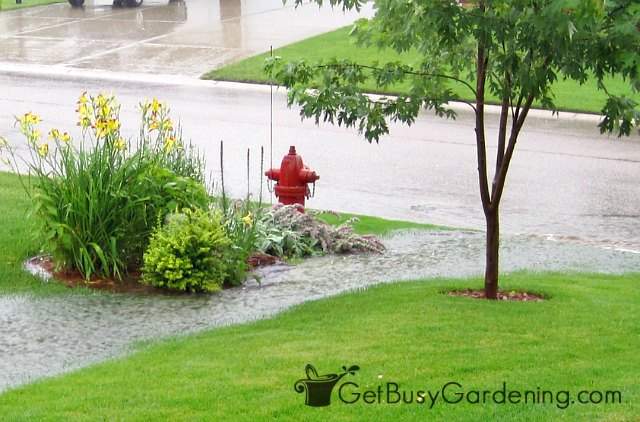
Rainwater Harvesting Advantages
What are the benefits of rainwater harvesting? Besides the fact that you will have a steady supply of free water, there are many more benefits of collecting rainwater that help the environment too.
Collecting rainwater…
- helps to conserve water
- reduces rainwater runoff
- prevents soil erosion
- provides water for plants and gardens during periods of drought and water restrictions
- reduces issues with overflowing storm systems
- improves local water quality
Different Rainwater Harvesting Methods
In larger scale rainwater collection systems, huge above ground rainwater harvesting tanks can be placed next to a house or business.
Even more complex systems include using underground rainwater tanks or cisterns for storing rainwater. Now that is impressive!
But most homeowners get started by simply adding a small rain barrel to catch runoff from their house, garage or shed using a rainwater gutter diverter. Learn how rain barrels work.
Small rain barrels limit the amount of water you can store though, so many gardeners will outgrow a single rain barrel pretty quickly, and opt for a larger rain barrel system.
So, the next step up is usually creating a slightly more complex rainwater harvesting system by connecting rain barrels together.
Using Rainwater In The Garden
Rainwater harvests can be used for tons of different things around the home and garden. But keep in mind that, unless you use a proper water filtration system, collected rainwater is not potable.
Here are a few ways you can use the water straight out of rainwater storage containers…
- Cleaning garden pots and planters
- Watering houseplants and outdoor potted plants (rainwater is the best type of water for plants!)
- Watering the garden
- Filling up garden ponds and water features
- Washing the car
- Washing windows
- Cleaning garden tools and equipment
- Washing lawn and patio furniture
Get Started With A Simple Rainwater Collection System
The easiest way to start collecting rainwater is by using a rain barrel. Don’t worry, they are super easy to install using a simple rainwater diverter. Here are step-by-step set up instructions.
You can use a rain barrel gutter attachment to hook up your barrel, or buy a rain barrel gutter diverter kit if you want to make your own.
Otherwise, you can simply direct the water into the barrel using flexible downspout tubing attached to the gutter.
If you don’t have a rain barrel yet, but want to get one, here is a good, basic rain barrel. If you want something that looks a little nicer, here’s a really cute decorative one that would be great for beginners.
Related Post: Winterizing A Rain Barrel In 4 Easy Steps
I hope this post has answered the question “what is rainwater harvesting” for you in an easy and non-technical way. I know it sounds like installing a rainwater collection system could be really complex, but now you see how easy it can be to get started storing and using rainwater in the garden.
More About Watering Your Garden
Share your rainwater harvesting tips in the comments section below.
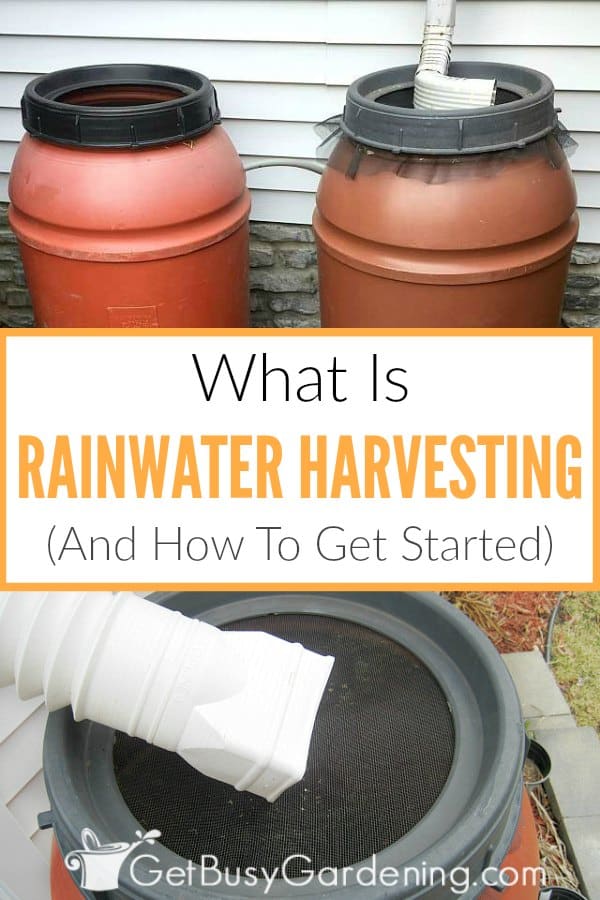
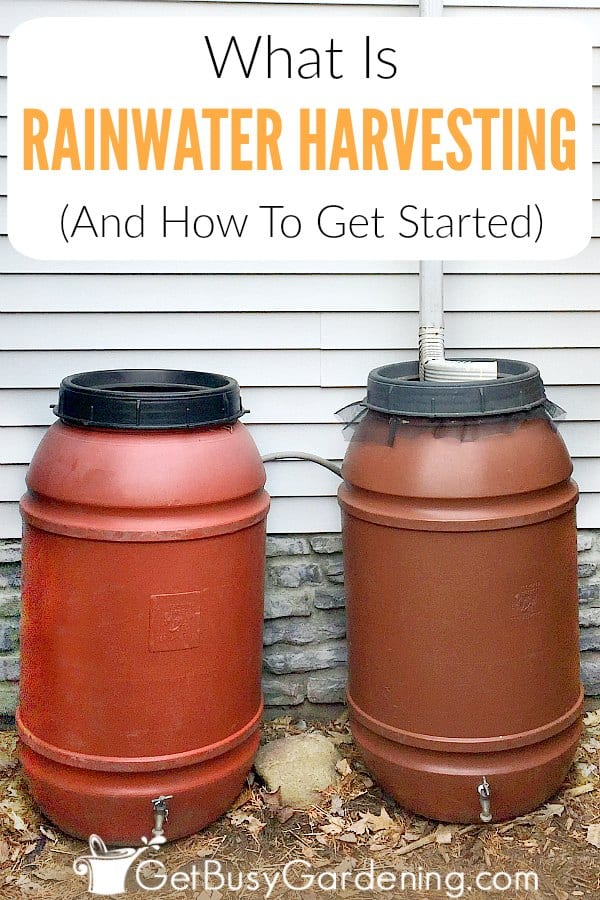

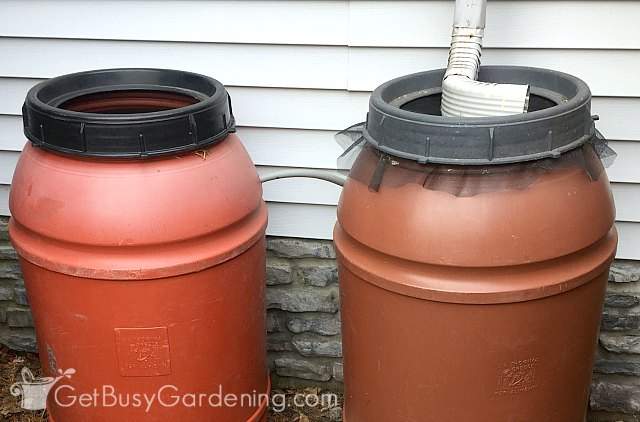
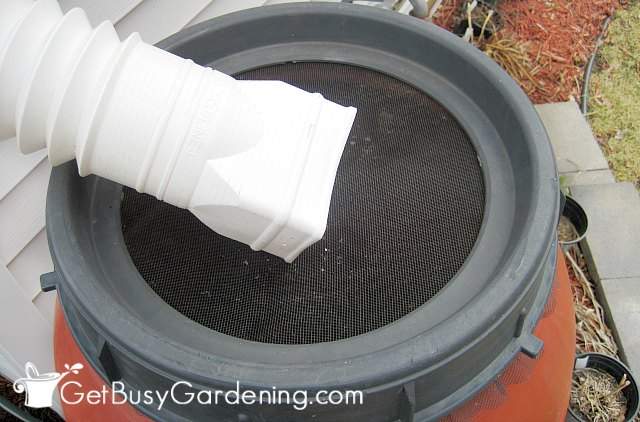

Taylor says
Love it! Our summers here in Texas can be super hot & dry and water conservation is important to me. I don’t like to use potable water for any outside purposes so all our irrigation comes from an underground cistern – I like to go easy on that water supply knowing the taps typically turn off in Texas around June and precious little falls from the sky between then and the end of September. Now I’m thinking I might just add a few rain barrels too, and save the water in my cistern for heavy periods of drought!
Amy Andrychowicz says
Awesome! You’re lucky to have an underground cistern for collecting rainwater, that would be so nice! And good for you for taking water conservation so seriously, that is fantastic!